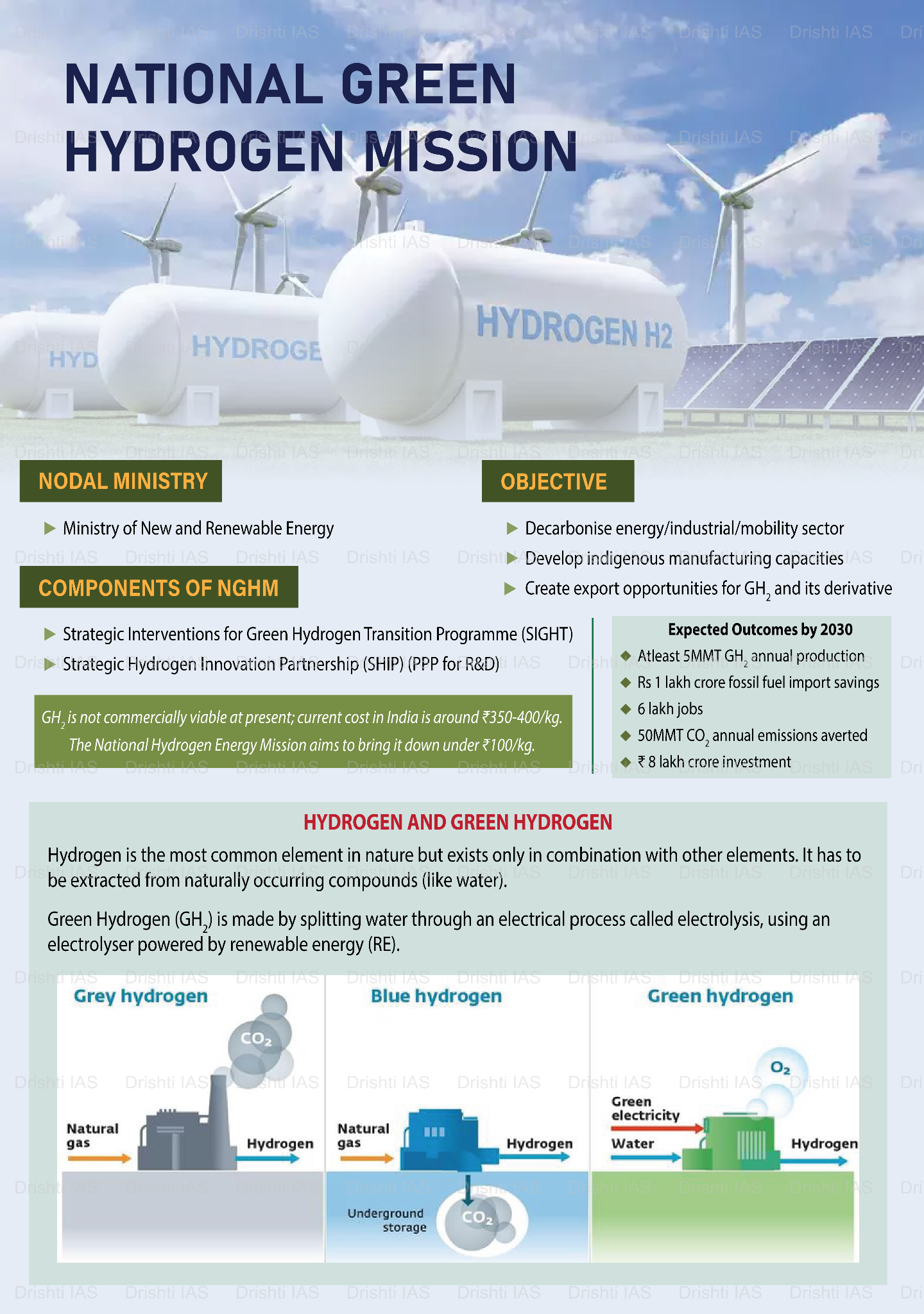Important Facts For Prelims
Quantum-Technology Backed Green Hydrogen Production
- 14 Oct 2023
- 4 min read
Why in News?
Recently, a new High Throughput Quantum Backed Green Hydrogen Production Technology that could promote green hydrogen production in bulk has been developed by Green Keplerate Team from Banaras Hindu University, which will help achieve the National Green Hydrogen Mission.
What is the Technology Developed ?
- About:
- The technology developed showcases the uses of Green Hydrogen as eco-friendly energy alternatives. They introduced next-generation quantum-powered photo-catalyst with a charge transfer system coupled with high proton availability and mobility, and delivered quantum catalytic applications for energy generation.
- Features:
- The state-of-the-art photochemical-reactor design features built-in illumination assembly and external concave reflective panels to maximize the capture of solar energy.
- The team has engineered a continuous electron coupled proton supply system, propelled with an electron injector mechanism utilizing industrial metal-waste, which ensures the peak rate of Green Hydrogen production at lab scale.
- Significance:
- Due to the high purity of the hydrogen gas produced, the fuel can be used without additional purification, thus enhancing the cost-effectiveness of the technology.
- This transformative innovation would offer wide ranging application possibilities across various sectors ranging from energy production to applications in transportation and agriculture.
National Green Hydrogen Mission
Quantum Technology
- Quantum Technology is based on the principles of Quantum mechanics that was developed in the early 20th century to describe nature at the scale of atoms and elementary particles.
- The first phase of this revolutionary technology has provided the foundations of our understanding of the physical world, including the interaction of light and matter, and led to ubiquitous inventions such as lasers and semiconductor transistors.
- A second revolution is currently underway with the goal of putting properties of quantum mechanics in the realms of computing.
- Properties of Quantum Computing:
- Superposition: One of the fundamental properties of quantum computing is superposition. In classical computing, a bit can be in one of two states, 0 or 1. In quantum computing, a qubit can exist in a superposition of these states, meaning it can represent both 0 and 1 simultaneously. This property allows quantum computers to process a vast amount of information in parallel, making them highly efficient for certain types of calculations.
- Entanglement: Quantum entanglement is a phenomenon where the quantum states of two or more qubits become correlated in such a way that the state of one qubit instantly affects the state of another, even when they are separated by vast distances. Entanglement allows for the creation of quantum gates and algorithms that exploit this unique connection to perform complex operations and computations.
- Quantum Interference: Quantum interference is a property that arises from the superposition of qubits. It allows quantum computers to combine and manipulate the probability amplitudes associated with different states to enhance the likelihood of obtaining the correct answer to a problem while reducing the likelihood of incorrect results.
UPSC Civil Services Examination Previous Year Question (PYQ)
Q 1. Hydrogen fuel cell vehicles produce one of the following as “exhaust” (2010)
(a) NH3
(b) CH4
(c) H2O
(d) H2O2
Ans: (c)
Q2. Consider the following heavy industries: (2023)
- Fertilizer plants
- Oil refineries
- Steel plants
Green hydrogen is expected to play a significant role in decarbonizing how many of the above industries?
(a) Only one
(b) Only two
(c) All three
(d) None
Ans: (c)





